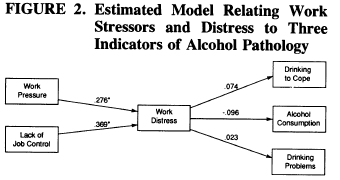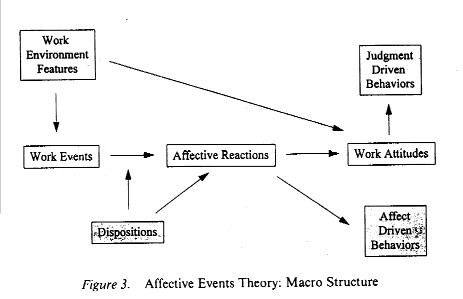
This page contains a definition of moderator variables and mediator variables, links to more information, and a few exercises to test your understanding of the concepts.
Moderator Defined
A moderator variable changes the strength of an effect or relationship between two variables. Moderators indicate when or under what conditions a particular effect can be expected. A moderator may increase the strength of a relationship, decrease the strength of a relationship, or change the direction of a relationship. In the classic case, a relationship between two variables is significant (i.e, non-zero) under one level of the moderator and zero under the other level of the moderator. For example, work stress increases drinking problems for people with a highly avoidant (e.g., denial) coping style, but work stress is not related to drinking problems for people who score low on avoidant coping (Cooper, Russell, & Frone, 1990). As another example (see Fig. 1 below), negative social contacts (e.g., disagreeement with friend) are associated with increased drinking at home for college students who say that they drink to cope (e.g., to forget about problems), but negative social contacts are unrelated to drinking at home for students who do not drink to cope ( Mohr et al., 2005). Statistically, a moderator is revealed through a significant interaction.

Mediator Defined
Mediator variables specify how or why a particular effect or relationship occurs. Mediators describe the psychological process that occurs to create the relationship, and as such are always dynamic properties of individuals (e.g., emotions, beliefs, behaviors). Baron and Kenny (1986) suggest that mediators explain how external events take on internal psychological significance. For example (see Fig. 2 below), Cooper et al. (1990) hypothesized that particular work features such as work pressures and lack of control would increase work distress which, in turn, would increase drinking. In this example, work distress is a mediator that explains how work features may come to be associated with drinking. (It should be noted that their mediation model was not supported by the data.) Statistically, after some basic conditions are met, mediation is indicated when the relationship between the predictor (e.g., work pressure) and criterion (e.g., drinking) is non-significant after controlling for the effect of the mediator.

Links
It may be valuable to take a look at some additional explanations of moderators and mediators on the web:
David A. Kenny, Professor of Psychology, University of Connecticut, has an excellent page on mediation and on moderation.
There is a Wikipedia entry on the mediator/moderator distinction.
Exercises
The following exercises are derived from Affective Events Theory (Weiss & Cropanzano, 1996).
1. Receiving a nasty email from a coworker leads to feelings of anger which reduce overall job satisfaction.
Does this describe mediation of moderation?
2. Access to free treats during break creates positive emotional responses for workers except for those who have high negative affect (i.e., who are perpetually grumpy).
Does this describe mediation or moderation?
3. In Fig. 3 below, are dispositions a moderator or a mediator?
4. In Fig. 3 below, are affective reactions a moderator or a mediator?

References
Baron, R., & Kenny, D. (1986). The moderator-mediator variable distinction in social psychological research: Conceptual, strategic, and statistical considerations. Journal of Personality and Social Psychology, 51, 1173-1182.
Cooper, M. L., Russell, M., & Frone, M. R. (1990). Work stress and alcohol effects: A test of stress-induced drinking. Journal of Health and Social Behavior, 31, 260-276.
Mohr, C. D., Armeli, S., Tennen, H., Temple, M., Todd, M., Clark, J., & Carney, M. A. (2005). Moving beyond the keg party: A daily process study of college student drinking motivations. Psychology of Addictive Behaviors, 19, 392-403.
Weiss, H. M. & Cropanzano, R. (1996).
Affective events theory: A theoretical discussion of the structure, causes and
consequences of affective experiences at work. In B.M. Staw and L.L. Cummings
(Eds.), Research in Organizational Behavior (Vol. 19, pp. 1-74).
Greenwich, CT: JAI Press.